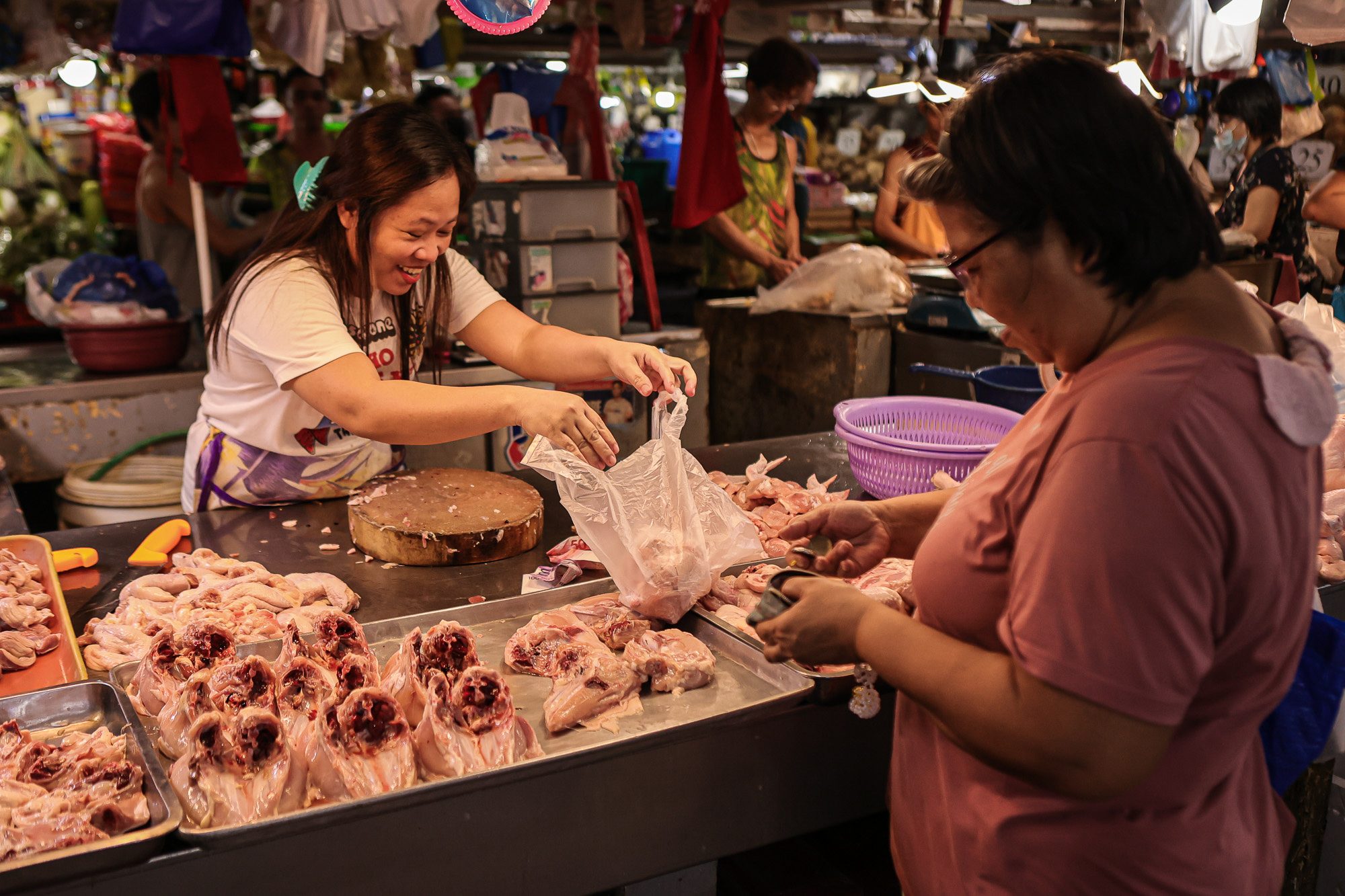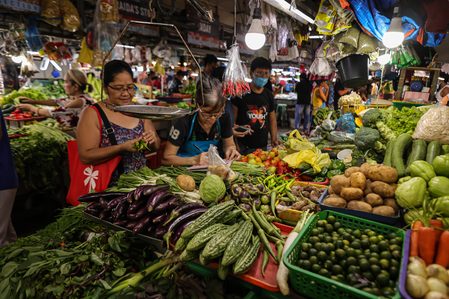SUMMARY
This is AI generated summarization, which may have errors. For context, always refer to the full article.

MANILA, Philippines – The country’s inflation rate went down to 6.1% in May, the fourth consecutive month of deceleration, the Philippine Statistics Authority (PSA) said.
In a press briefing on Tuesday, June 6, the PSA said transport and food costs drove the slowdown in inflation, providing some relief to struggling Filipino households.
Meat inflation moderated as the inflation rate for chicken fell from 7.7% to 5.9% and the inflation rate for beef decreased from 6.1% to 5.3%. Meanwhile, pork continued to experience deflation, with a rate of -1% compared to -0.3%, due to an increase in import arrivals accompanied by timely unloading of frozen pork stocks.
Main sources of deceleration of May 2023 inflation are transport, food and non-alcoholic beverages, restaurants and accommodation services @rapplerdotcom pic.twitter.com/iTqeei5CyT
— Ralf Rivas (@RalfRivas) June 6, 2023
The latest figure is lower than the 6.6% recorded last April. In May 2022, the inflation rate was at 5.4%.
Year-to-date, inflation stands at 7.5%, still far from the target band of 2% to 4%.
“We are confident that we can achieve the government’s inflation target this year as we work closely with concerned government agencies in monitoring the primary drivers of inflation,” said National Economic and Development Authority Secretary Arsenio Balisacan in a statement on Tuesday.
Inflation in the National Capital Region eased to 6.5%. Areas outside NCR posted an average inflation rate of 6%.
Inflation in Metro Manila down 6.5% in May from 7.1% in April. Meanwhile, areas outside Metro Manila register 6%.
— Ralf Rivas (@RalfRivas) June 6, 2023
Mimaropa posts highest inflation rate at 7.2%, lowest is CAR at 3.9%. @rapplerdotcom pic.twitter.com/zLU1t369Ii
Balisacan said the government’s economic managers, through the recently formed Inter-Agency Committee on Inflation and Market Outlook, are keeping tabs on data on local and international prices, as well as the level of domestic production, import arrivals, climate outlook, and other relevant supply and demand information for key commodities.
“As the risks to the inflation outlook lean towards the upside due to potential increases in transport fares, wage adjustments, higher electricity rates, and domestic prices of key food items resulting from the impact of El Niño, the government is working to implement the necessary interventions as we aim to keep prices low and stable for Filipino consumers,” said Balisacan.
The Bangko Sentral ng Pilipinas (BSP) earlier paused interest rate hikes following the downtrend in inflation.
The 6.1% inflation rate for May fell within the BSP’s forecast range of 5.8% to 6.6%.
The next meeting of the BSP’s Monetary Board is on June 22. – Rappler.com
Add a comment
How does this make you feel?

![[EDITORIAL] Apat na taon na lang Ginoong Marcos, ‘di na puwede ang papetiks-petiks](https://www.rappler.com/tachyon/2024/07/animated-bongbong-marcos-2024-sona-day-carousel.jpg?resize=257%2C257&crop=280px%2C0px%2C720px%2C720px)
![[In This Economy] Delulunomics: Kailan magiging upper-middle income country ang Pilipinas?](https://www.rappler.com/tachyon/2024/07/in-this-economy-upper-middle-income-country.jpg?resize=257%2C257&crop=421px%2C0px%2C1080px%2C1080px)

![[EDITORIAL] Marcos Year 2: Hilong-talilong](https://www.rappler.com/tachyon/2024/07/animated-bongbong-marcos-2nd-sona-carousel.jpg?resize=257%2C257&crop=136px%2C0px%2C720px%2C720px)
![[Newspoint] A fighting presence](https://www.rappler.com/tachyon/2024/07/thought-leaders-a-fighting-presence.jpg?resize=257%2C257&crop=441px%2C0px%2C1080px%2C1080px)
There are no comments yet. Add your comment to start the conversation.